10 Tips For Beautiful Scandinavian Interiors
Scandinavian design has been a popular decorating style for years, known for its simplicity, functionality, and cozy atmosphere. It’s a design style emphasizing practicality and minimalism, with an appreciation for natural elements and a neutral color palette. Achieving the perfect balance of these elements can be challenging, but anyone can create a beautiful Scandinavian-inspired interior with the right guidance.

This article will explore ten tips for creating a stunning Scandinavian interior. From the importance of lighting to the use of warming textiles and natural finishes, we will cover all the essential elements of this design style.
Whether starting from scratch or looking to refresh your current interior, these tips will help you create a space that embodies the best Scandinavian design.
Simplicity and Functionality
Simplicity and functionality are key principles in Scandinavian interior design, as demonstrated through neutral color palettes, minimalist decor, and practical storage options such as wall shelving. This design style emphasizes the beauty of simplicity, with a focus on clean lines and uncluttered spaces. Scandinavian furniture is often minimalistic, with simple yet elegant designs prioritizing functionality and practicality.
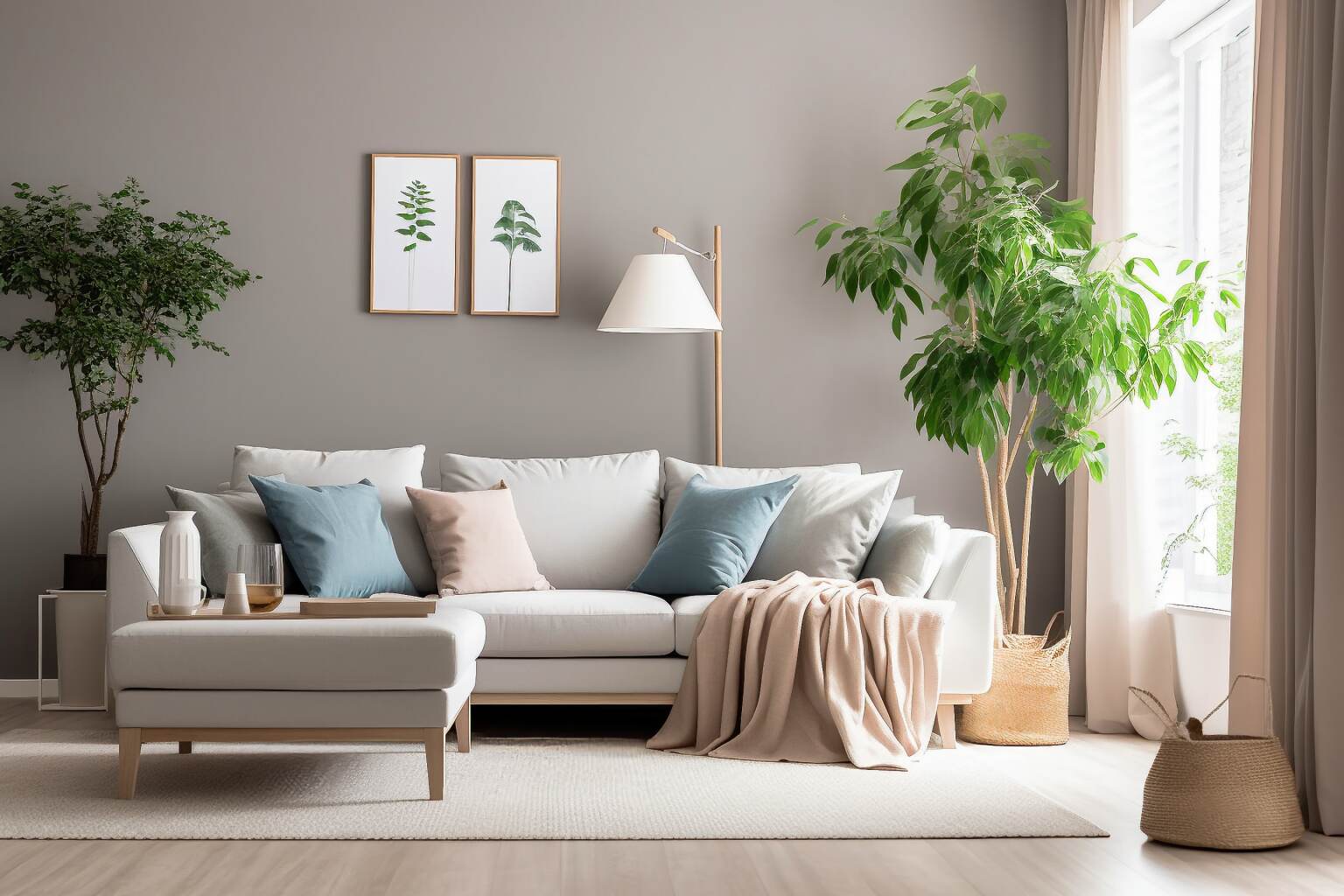
Minimalist decor is a hallmark of Scandinavian design, with a preference for clean, unadorned surfaces and a lack of unnecessary embellishments. This focus on simplicity extends to every design aspect, from furniture to accessories. Scandinavian interiors often feature a neutral color palette, with white, gray, and black being the most common hues. This creates a calming atmosphere and allows other elements, such as natural wood or metal finishes, to stand out.
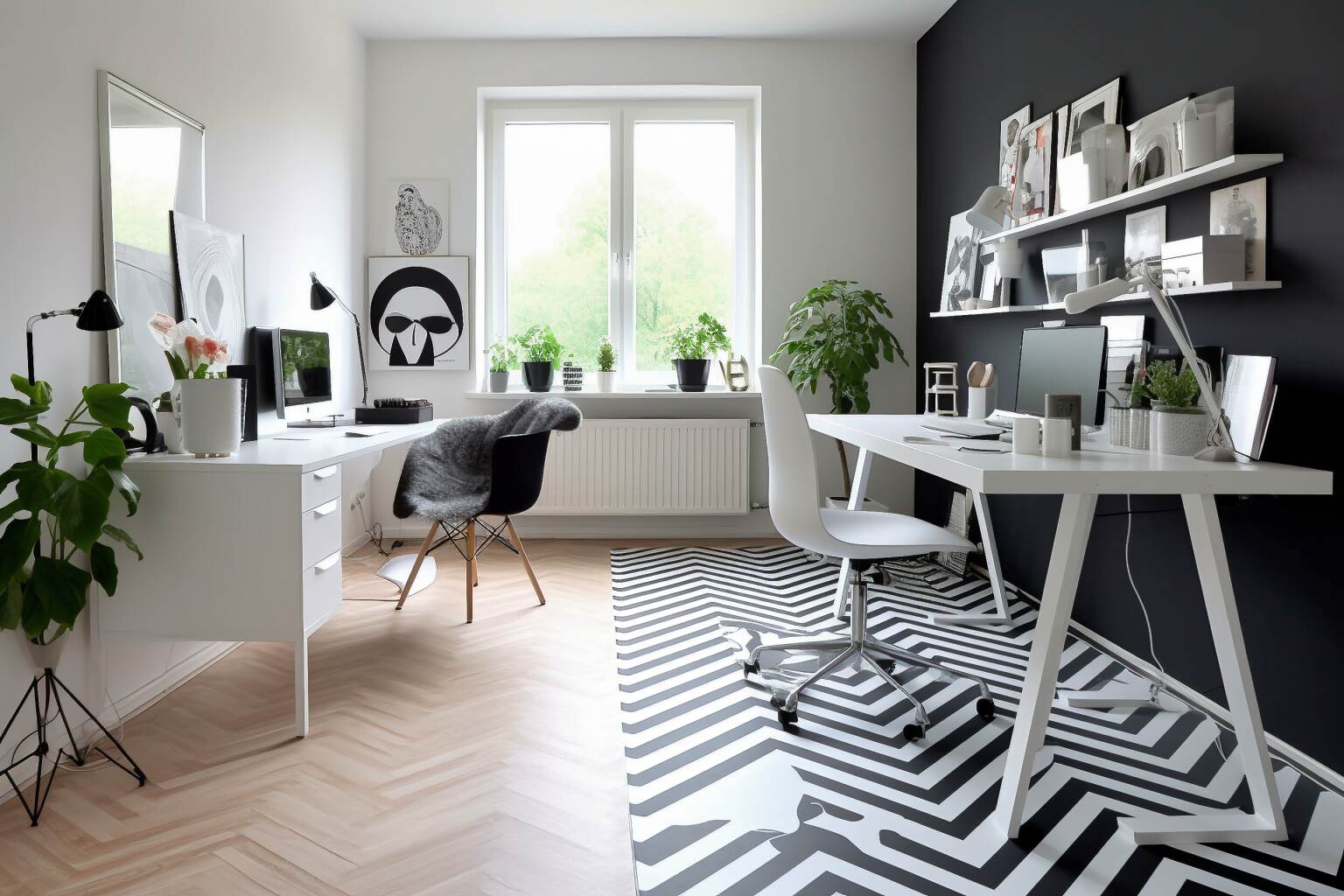
Practical storage options such as wall shelving are also popular, allowing for the easy organization of items while providing visual interest. Overall, simplicity and functionality are essential elements of Scandinavian interior design, creating beautiful and highly functional spaces.
Importance of Lighting
Lighting is crucial in Scandinavian design, particularly due to the limited daylight hours during winter months. Multiple types of lighting are necessary to create a warm and inviting atmosphere.

Layered lighting is key, combining overhead fixtures, table lamps, and floor lamps to provide ample light in different room areas.
In addition, candlelight is essential in Scandinavian design, adding a whimsical glow to a room. Candles can be placed in lanterns, tabletops, or shelves to create a cozy ambiance. The flickering flame of a candle adds warmth to a space, making it feel inviting and comfortable.
Overall, lighting is an essential element of Scandinavian design, and careful consideration should be given to creating a welcoming and cozy atmosphere through various lighting sources.
Practical Storage Solutions
One important aspect of creating functional living spaces in Scandinavian design is the implementation of practical storage solutions. In small space living, it can be challenging to find adequate storage without sacrificing style and aesthetics. However, Scandinavian design utilizes creative shelving solutions to maximize storage space without compromising design.

To achieve big storage in small spaces, consider the following practical storage solutions commonly found in Scandinavian interiors:
- Wall Shelving: Wall shelving is a popular and practical solution for storage and visual interest. It allows for displaying decorative accents and storing practical items without wasting valuable floor space.
- Built-In Cabinetry: Customizable cabinetry, like those offered by Danish company, Montana, can be tailored to fit specific storage needs and create a seamless and integrated look.
- Under Bed Storage: Utilizing the space under the bed for storage is a smart solution for small bedrooms. Under-bed storage boxes or drawers can store clothes, linens, and other items, keeping them easily accessible yet out of sight.
- Multi-Functional Furniture: Furniture that serves multiple purposes, like a storage ottoman or a bookshelf that doubles as a room divider, maximizes space, and offers extra storage options.
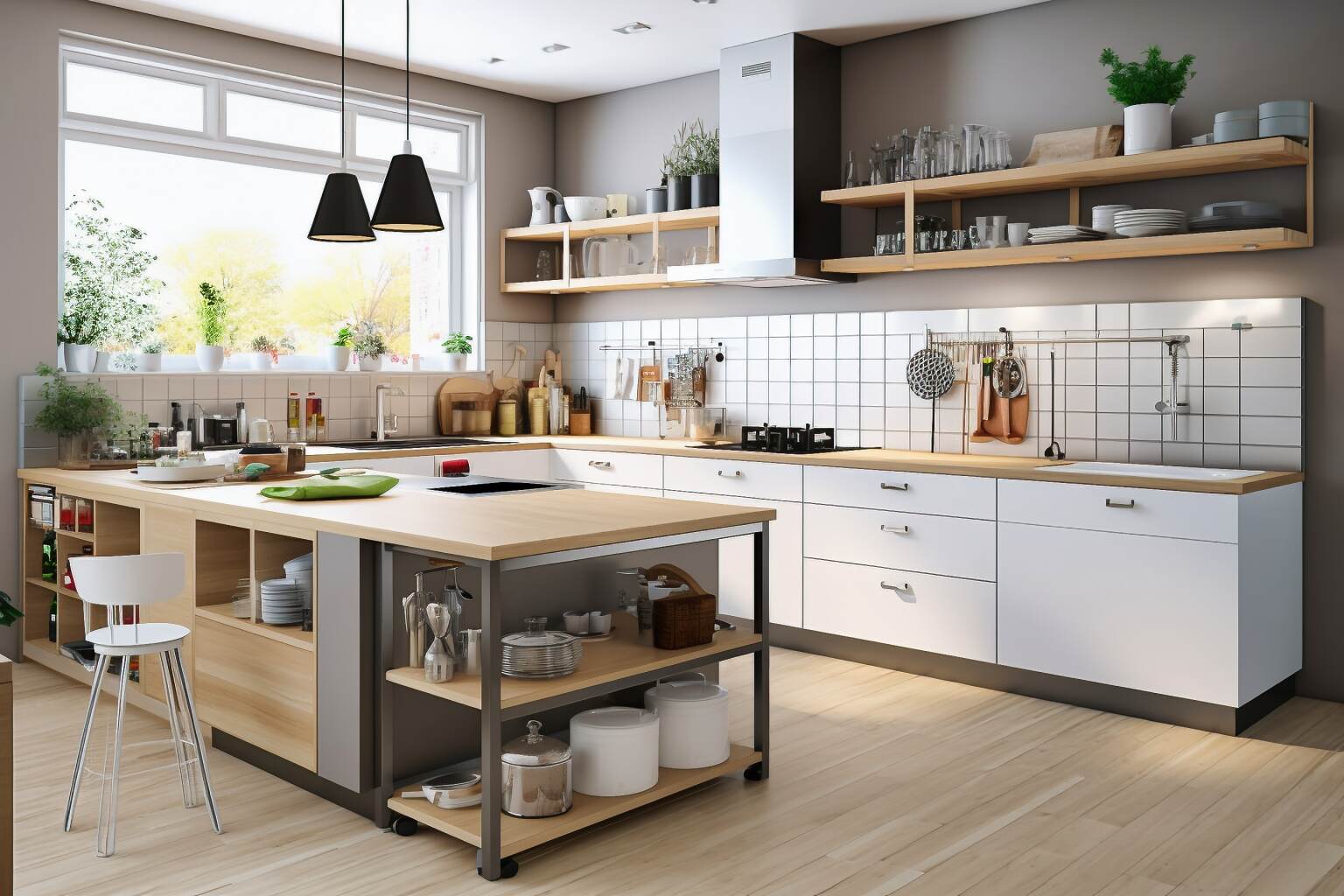
By incorporating these practical storage solutions, Scandinavian design proves that small spaces can still have big storage while maintaining the simplicity and functionality that defines the style.
Neutral Color Palette
Using neutral colors is a characteristic of the Scandinavian design style, creating a calming and cohesive atmosphere. The color palette consists of whites, grays, blacks, and browns, all of which are muted and soothing. This choice of color reflects the Scandinavian approach to design, which emphasizes the beauty of simplicity and functionality. Neutral colors also allow for the incorporation of pops of color, adding interest and personality to a space.

Color psychology plays an important role in using neutral colors in Scandinavian design. The colors used in this style are associated with calmness, purity, and simplicity. They create a sense of tranquility and relaxation, which is important in a space meant to be a sanctuary. Additionally, the use of neutral colors allows for flexibility in decor. Accessories and accents can be changed frequently to keep the space fresh and updated. By incorporating pops of color, the space can be personalized while maintaining the Scandinavian design’s calming and cohesive atmosphere.
| Pros | Cons |
|---|---|
| Neutral colors are timeless and versatile | It may not be suitable for those who prefer bold, bright colors |
| Easy to incorporate pops of color | It can be challenging to add visual interest without being too busy |
| Create a calming and cohesive atmosphere | It may not be suitable for those who prefer maximalist design |
| Allow for flexibility in decor | It may require additional lighting to avoid feeling too dark |
| Complement natural materials and textures | It may not be suitable for those who prefer a maximalist design |
Natural Flooring
Natural flooring is a prominent feature in Scandinavian design, with hardwood flooring in natural or white colors being the preferred choice over wall-to-wall carpet.
Using natural materials such as wood, stone, and jute is crucial to the Scandinavian design philosophy, emphasizing simplicity, functionality, and sustainability.

Hardwood flooring adds warmth and texture to space and is durable and can last for decades with proper maintenance.
In addition to hardwood flooring, several sustainable options can be used in Scandinavian interiors. Cork, bamboo, and reclaimed wood are all eco-friendly choices that can add a unique touch to a space.

DIY enthusiasts can also explore creative flooring ideas such as stenciled concrete, painted plywood, or geometric tile patterns. However, it is important to remember that simplicity and minimalism are key elements of Scandinavian design, and it is best to choose flooring options that complement the space’s overall aesthetic.
Living Elements
Moving on from natural flooring, another key aspect of Scandinavian design is incorporating living elements. Indoor plants and botanical prints are important living elements that add a sense of nature and freshness to the interior. They also help purify the air and create a calming atmosphere.

Incorporating indoor plants in a Scandinavian interior is a simple and effective way to add color, texture, and life. Plants like ferns, succulents, and snake plants are popular as they require minimal care and can thrive in low-light conditions. Botanical prints can also be incorporated into the decor through artwork, throw pillows, or curtains. These prints add a natural and organic feel to the space and can be used to complement the interior’s color scheme. To showcase the beauty of these living elements, it is important to strategically place them in areas where they can be easily seen and appreciated.
| Pros | Cons |
|---|---|
| Indoor plants improve air quality | Some plants may require frequent watering or maintenance |
| Plants add natural color and texture | Some plants may not thrive in low light or humid conditions |
| Botanical prints add a natural and organic feel to the space | Some people may have allergies to certain plants or pollen |
| Plants have a calming effect on the mind and body | Overcrowding the space with too many plants can create a cluttered look |

Incorporating living elements such as indoor plants and botanical prints is a crucial aspect of Scandinavian design. These elements add a sense of nature and freshness while creating a calming and inviting atmosphere. When incorporating these elements, it is important to choose plants that are easy to care for and complement the overall color scheme of the interior. Additionally, it is important to strategically place these living elements throughout the space to showcase their beauty and maximize their benefits.
Limited Window Treatments
Limited window treatments are a defining feature of Scandinavian design, allowing as much natural light as possible to enter a space. This is especially important during the winter months when daylight hours are limited.
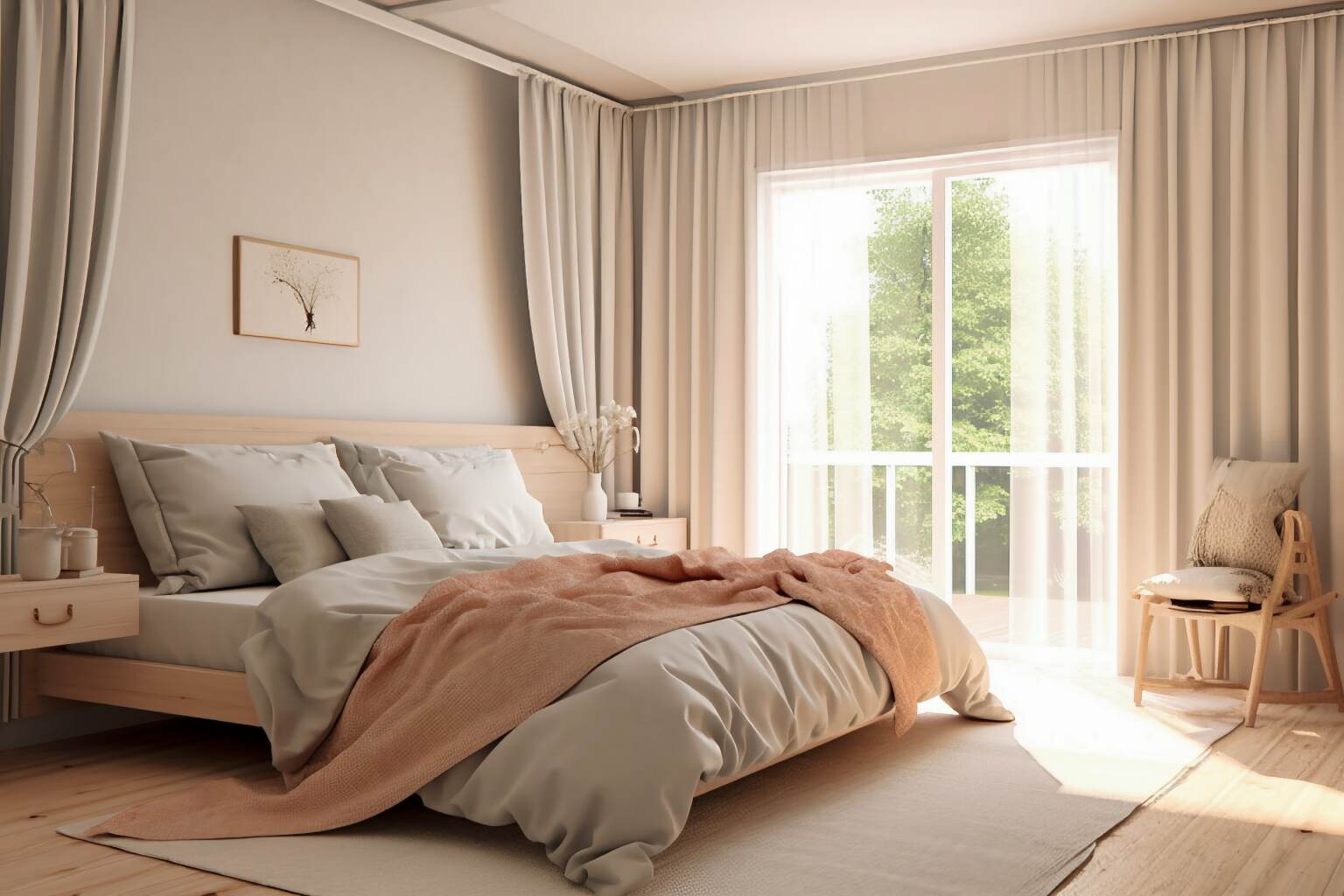
Window treatments in Scandinavian interiors are kept simple and minimal, with sheer fabrics and linen being preferred options. This allows natural light to enter space and creates a sense of openness and airiness.
The window treatment options in Scandinavian interiors are limited, with blinds and shades used sparingly. However, they are typically natural or neutral colors, blending seamlessly with the surrounding decor.
Scandinavian bathroom design often incorporates frosted or textured glass windows, adding privacy without sacrificing natural light.
The limited use of window treatments in Scandinavian design enhances the natural light’s beauty and promotes a minimalist and clutter-free aesthetic.
Simple Decorative Accents
Moving on from the importance of limited window treatments in Scandinavian interiors, we now delve into the significance of simple decorative accents. While Scandinavian design is known for its minimalism, that does not mean it lacks character or personality. Incorporating simple yet eye-catching decorative accents is key to creating a beautiful and inviting space.
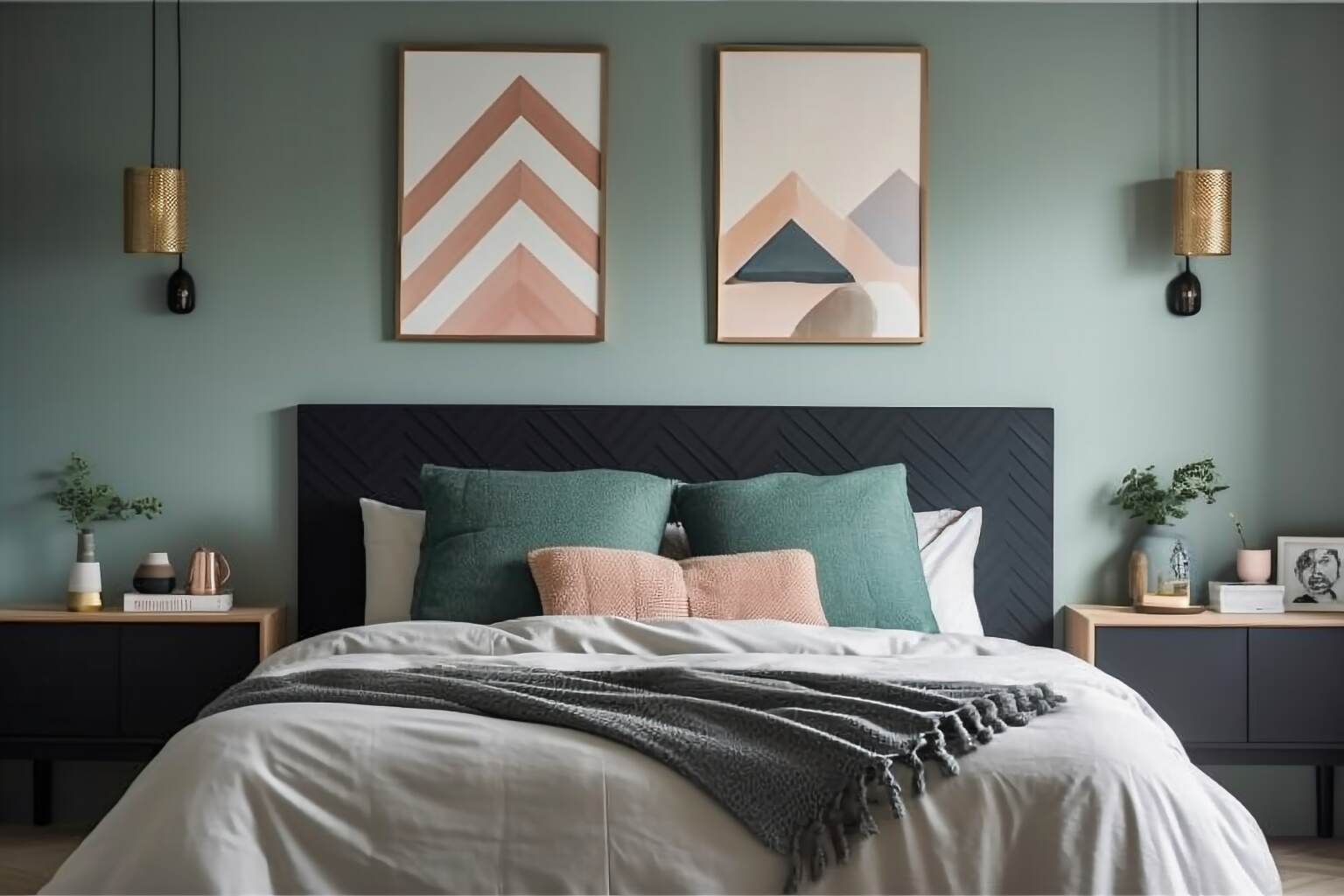
To add interest and texture to a room, designers often use a variety of decorative accent pieces such as ceramic vases, geometric patterned pillows, and unique wall art. These accents can also serve as inspiration for incorporating pops of color into an otherwise neutral color palette. To give you some ideas, here is a table showcasing some decorative accent inspiration for your Scandinavian interior design:
| Decorative Accents | Incorporating Pops of Color | Texture |
|---|---|---|
| Ceramic Vases | Dusty Pink | Wool |
| Geometric Patterned Pillows | Sea Green | Sheepskins |
| Wall Art | Mustard Yellow | Cotton |
| Decorative Throw Blankets | Terracotta | Fur |
| Metallic Candle Holders | Deep Blue | Leather |
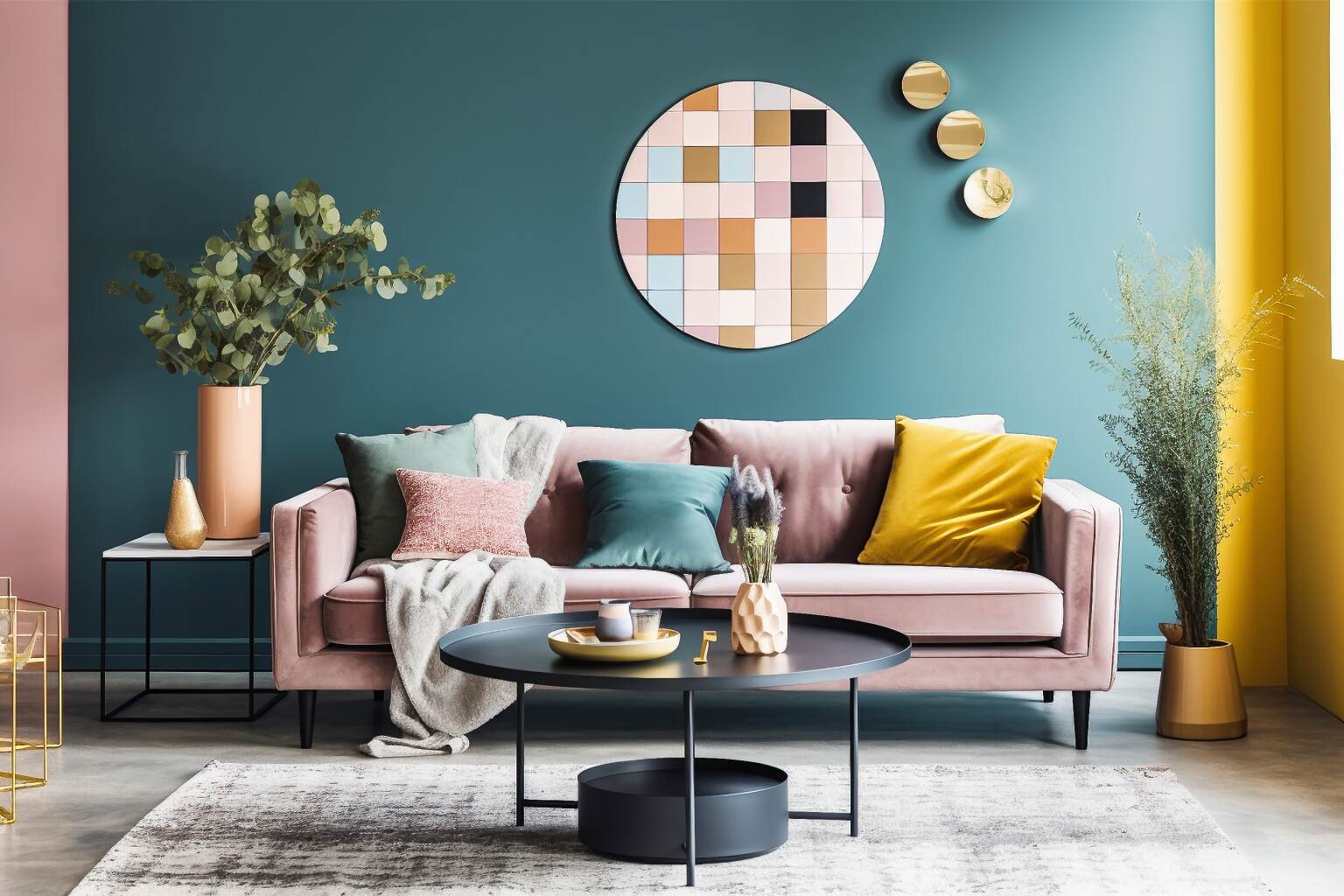
Incorporating these simple decorative accents, you can add personality and warmth to your Scandinavian interior design. Remember to keep it simple and intentional, and don’t be afraid to experiment with different textures and pops of color to create a space that is both beautiful and functional.
Warming Textiles
Warming textiles are crucial in creating a cozy and inviting atmosphere in Scandinavian design. Sheepskins, wool, and cotton are popular materials used to add texture and comfort to a space. These textiles are often used in throw blankets, accent pillows, and area rugs.

In addition to warmth, textile textures can provide visual interest and contrast in a minimalist space. Mixing different textures, such as a chunky knit throw with a smooth sheepskin rug, can create a layered and inviting look.
Soft textiles can enhance cozy seating options, such as a plush armchair or a comfortable sofa. These warming textiles add comfort and style to a space and embody the idea of hygge, or the Danish concept of coziness and contentment.
Metal and Wood Finishes
Metal and wood finishes are prevalent in Scandinavian design, with metallic accents adding shine and wood finishes bringing a natural element to a space. Combining these materials creates a balance of warmth and coolness, essential in Scandinavian interiors. Mixing materials is a common practice in Scandinavian design, and it is an effective way to add depth and texture to a space.
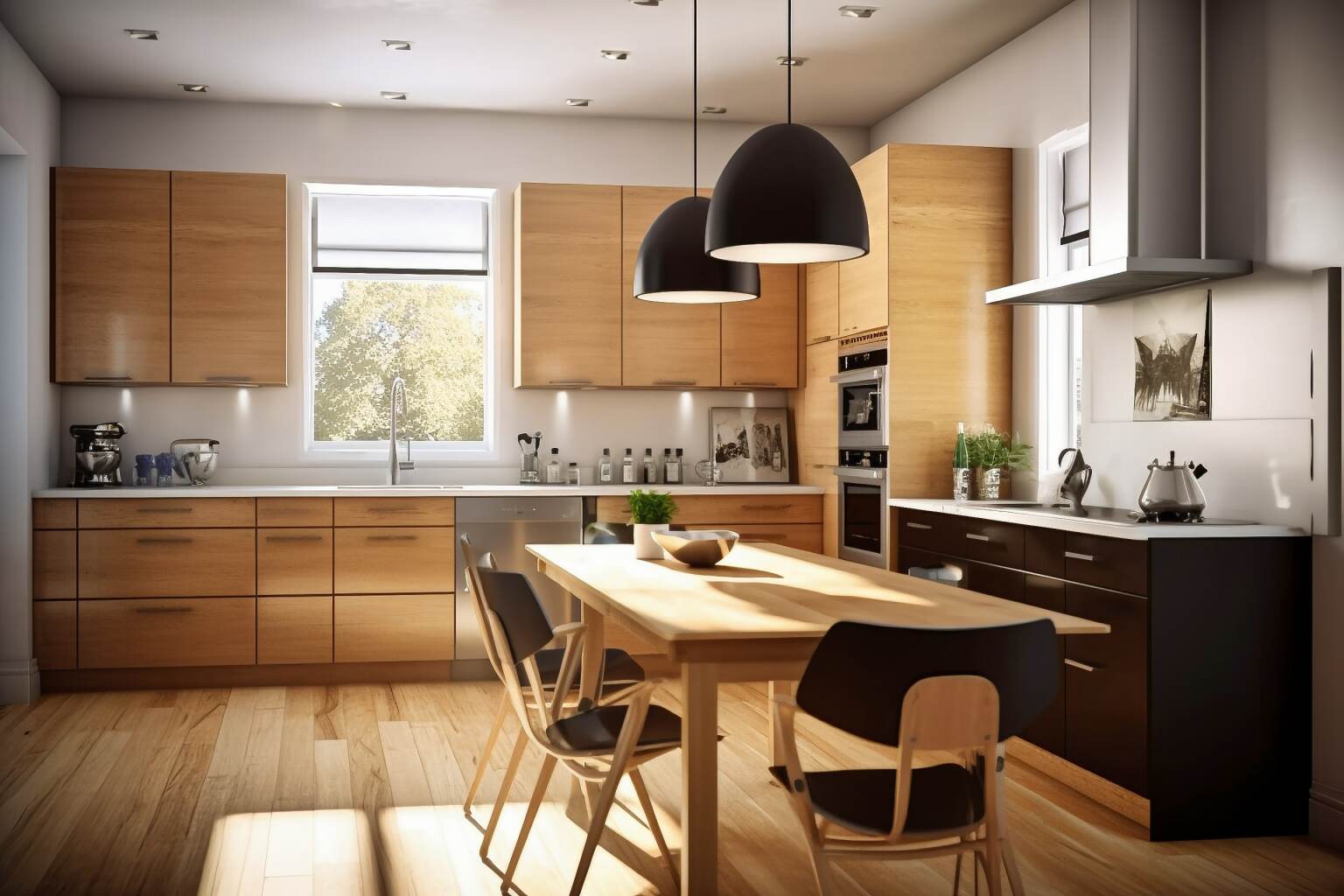
For instance, a wooden coffee table paired with metal legs adds interest and contrast to a room. Likewise, a metal pendant lamp hanging above a wooden dining table creates visual appeal and draws the eye upward. When combining finishes, it is crucial to maintain a cohesive color palette to avoid a disjointed look.

Scandinavian design focuses on simplicity and minimalism, so it is best to stick to one or two finishes and use them throughout the space. For example, brass accents can be used in light fixtures, picture frames, and accessories to create a cohesive look. Mixing silver and gold finishes can be tricky, but it can be done effectively if used sparingly and intentionally.
The key to successfully mixing materials and finishes in Scandinavian design is to keep it simple and intentional.
Frequently Asked Questions
What are some common materials used in Scandinavian interior design beyond wood and metal finishes?
Sustainable materials such as bamboo, jute, and hemp are commonly used in Scandinavian interior design. Textile accents like linen, wool, and cotton add warmth and texture to spaces while remaining true to the minimalist aesthetic.
Are there any specific guidelines for arranging decorative accents in a Scandinavian space?
When arranging decorative accents in a Scandinavian space, it is important to consider the color schemes and textural accents. Simple, subtle pieces are preferred over clutter. Grouping objects in odd numbers and varying heights can create visual interest without overwhelming the space.
What are some common types of lighting used in Scandinavian interiors?
Scandinavian lighting styles encompass multiple types of lighting to create a cozy and welcoming atmosphere in interiors with limited daylight hours. Tips for lighting in Scandinavian interiors include using candlelight, multiple sources of light, and metallic finishes for added shine.
How do Scandinavian interiors incorporate natural elements beyond just plants and flowers?
Scandinavian interiors often incorporate natural textures such as wood, stone, wool, and plants and flowers. A minimalist color palette allows these elements to shine, while sustainability in design is emphasized through eco-friendly materials and practices.
Are there any traditional Scandinavian design elements commonly incorporated into modern interiors?
Traditional Scandinavian design elements such as clean lines, functional furniture, and natural materials are commonly incorporated into modern interiors. The neutral color palette of whites, grays, blacks, and browns remains a staple in traditional and modern Scandinavian design.




